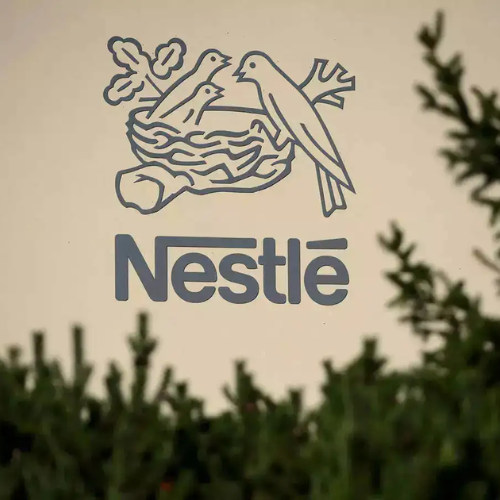Climate Change is a Threat Nestlé Can’t Ignore
As the world’s largest food company, Nestlé is facing a huge challenge: climate change. Rising temperatures, extreme weather, and changing environmental regulations are already starting to impact how producers make and sell food.
Nestlé knows this, and it’s taking the problem seriously. The company recently studied how global warming could affect its business over the next ten years.
This special study, called a “resilience analysis,” looked at what could happen if temperatures rise by 1.5°C (a smaller increase) or up to 3°C (a more serious increase). The results? Nestlé could lose a lot of money, as much as 11 billion Swiss francs (CHF), if the worst-case scenario happens. Even in the best-case scenario, the company might still face losses.
The risks are grouped into three main areas — policy, market, and technology. The most expensive group is policy, which includes things like the rising price of raw materials (such as cocoa and coffee), higher energy bills, and increased costs of packaging. If global temperatures go up just 1.5°C, Nestlé could face the highest cost category — between CHF 7 billion and CHF 11 billion.
Market risks are tied to how people buy food. If shoppers stop buying certain products or want new ones that Nestlé doesn’t yet offer, the company could lose sales. These market risks could cost up to CHF 3 billion in a medium-emissions world.
Climate Finance Stalemate at Bonn Talks Ahead of Baku Summit
Technology risks include things like needing to replace old equipment or invest in new low-emission machines to meet government rules. These costs are expected to be lower, also up to CHF 3 billion.
Nestlé says that the climate could cause these losses, though they aren’t guaranteed, just potential outcomes. Still, the numbers are big enough to raise concern.
Nestlé Has a Plan to Reduce Risk and Cut Carbon
Nestlé isn’t just waiting for things to get worse. It has a plan called the Net Zero Roadmap, which is already helping to lower some of these risks. By cutting emissions and changing how things are made, Nestlé hopes to stay ahead of new rules and avoid big losses.
So far, the company has made real progress. By the end of 2024, Nestlé had reached 95.3 per cent of its goal to use 100 per cent renewable electricity in its factories by 2025. It has also managed to reduce its use of virgin plastic — that is, plastic made from new materials — by 21.3 per cent, with a goal to cut it by one-third by 2025.
Another big step is encouraging regenerative agriculture, a way of farming that helps the environment. Nestlé aimed for 20 per cent of its main ingredients to come from these eco-friendly farms by 2025, and by 2024, it had already reached 21.3 per cent.
All these actions help Nestlé deal with the cost of climate change. They also help the company avoid penalties from carbon rules and reduce how much it depends on fossil fuels.
Nestlé Turns Trouble into Innovation
But Nestlé doesn’t just see climate change as a problem. It also sees a big opportunity. As more people care about the environment, Nestlé thinks there’s a growing market for low-carbon foods and drinks. That means products that are made in ways that don’t harm the planet as much.
One of the biggest trends is the demand for plant-based foods. Nestlé has already launched plant-based creamers like Coffee Mate and Natural Bliss, a vegan tuna alternative, a meat-free burger, and even a dairy-free version of its Carnation condensed milk. These new foods are meant to be tasty, but also better for the planet.
Change Threatens Asia’s Future
Nestlé is also looking into dairy alternatives using exciting new technology like precision fermentation. This process lets scientists grow milk proteins using microbes like yeast — no cows needed. These proteins can then be used to make things like stretchy vegan mozzarella, which feels and tastes like real cheese but has a smaller carbon footprint.
Another smart move by Nestlé is to create hybrid products — mixing real dairy with plant-based ingredients. In Vietnam, the company launched a powdered milk for kids that blends both, lowering the environmental impact while keeping the nutrition.
Nestlé says it’s always looking for ways to reformulate its recipes. That means swapping out ingredients for ones that are better for the Earth, without changing the taste people love. By making these changes, Nestlé not only reduces pollution but also lowers costs in the long run.
Other opportunities the company has listed include:
- Building a stronger, more climate-smart supply chain
- Saving money by using cleaner energy sources
- Avoiding future costs from carbon taxes
- Meeting new customer demands with eco-friendly products
Nestlé is showing that even in the face of a global crisis, smart planning and innovation can turn challenges into chances to grow and lead.





